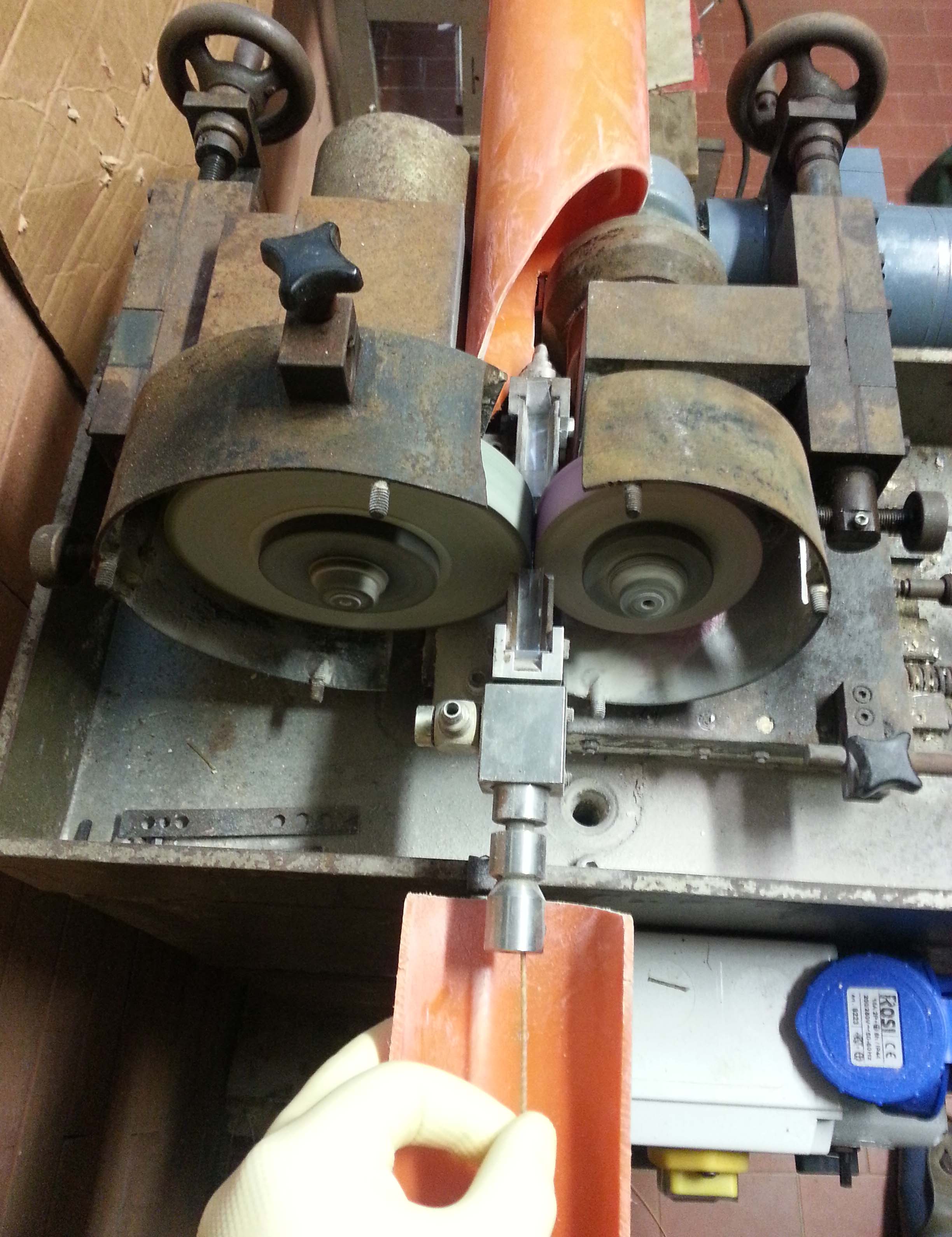Before the introduction of the centerless grinding in the 1900s, the only technique used to make the strings smooth by eliminating as much as possible the irregularities that caused the vibration to be false was the manual smoothing.
The sanding was carried out by grabbing together various strings stretched on the frame and sliding a cloth soaked in oil and pumice or asperella powder, in order to avoid the ovalization of the strings as much as possible, as would have certainly happened by sanding a single string at a time.
The result was however, as is evident, rather approximate, and the percentage of false strings was very high (30 to 50%!).
During the 1900s, as has been said, it was finally possible to eliminate these problems thanks to the use of the centerless grinding, which allows to obtain a perfectly cylindrical and calibrated string at will, with the only, but not indifferent defect, that this can involve the removal of a considerable quantity of material, cutting the fibers and making the strings weaker and prone to fraying.
In reality, using the whole gut as Cordedrago does, the effect of fraying is almost non-existent, also because raw strings of a caliber are made very close to that requested by the customer, removing as little material as possible. Moreover, the use of fine lamb gut and very precise twisting machines produces extremely regular and cylindrical strings even without sanding, therefore the grinding process only serves to bring the caliber to the exact one requested by the customer.




